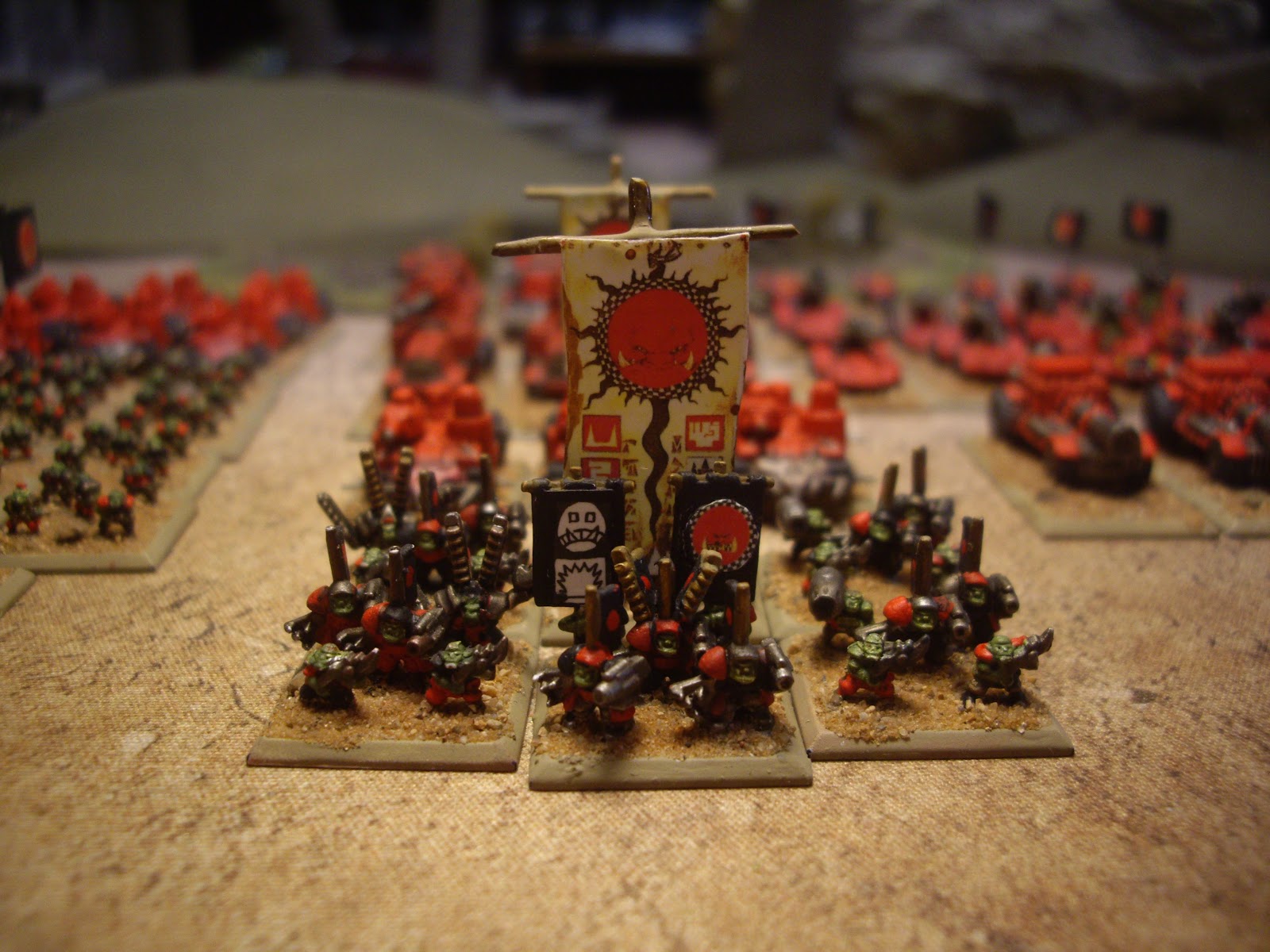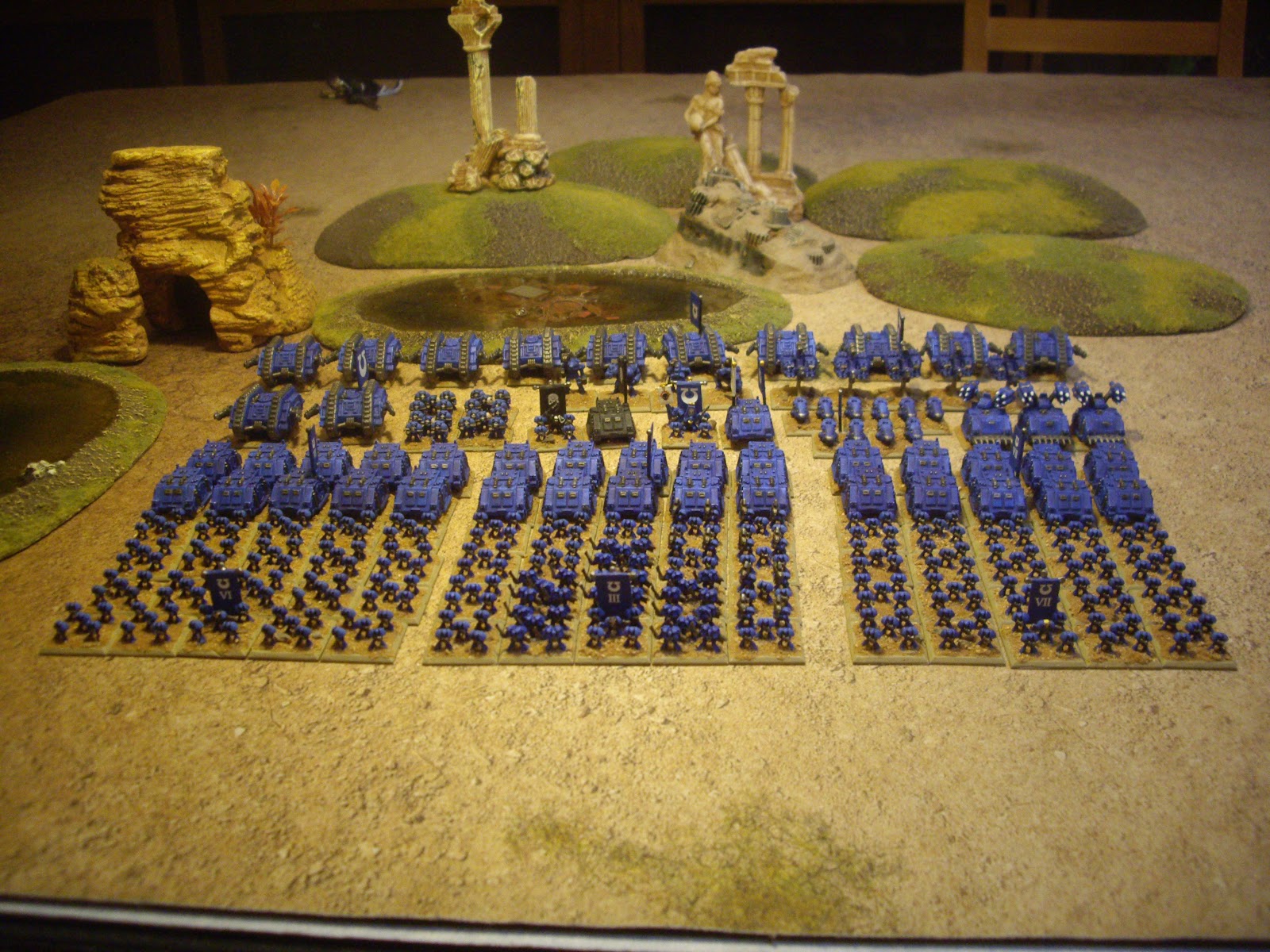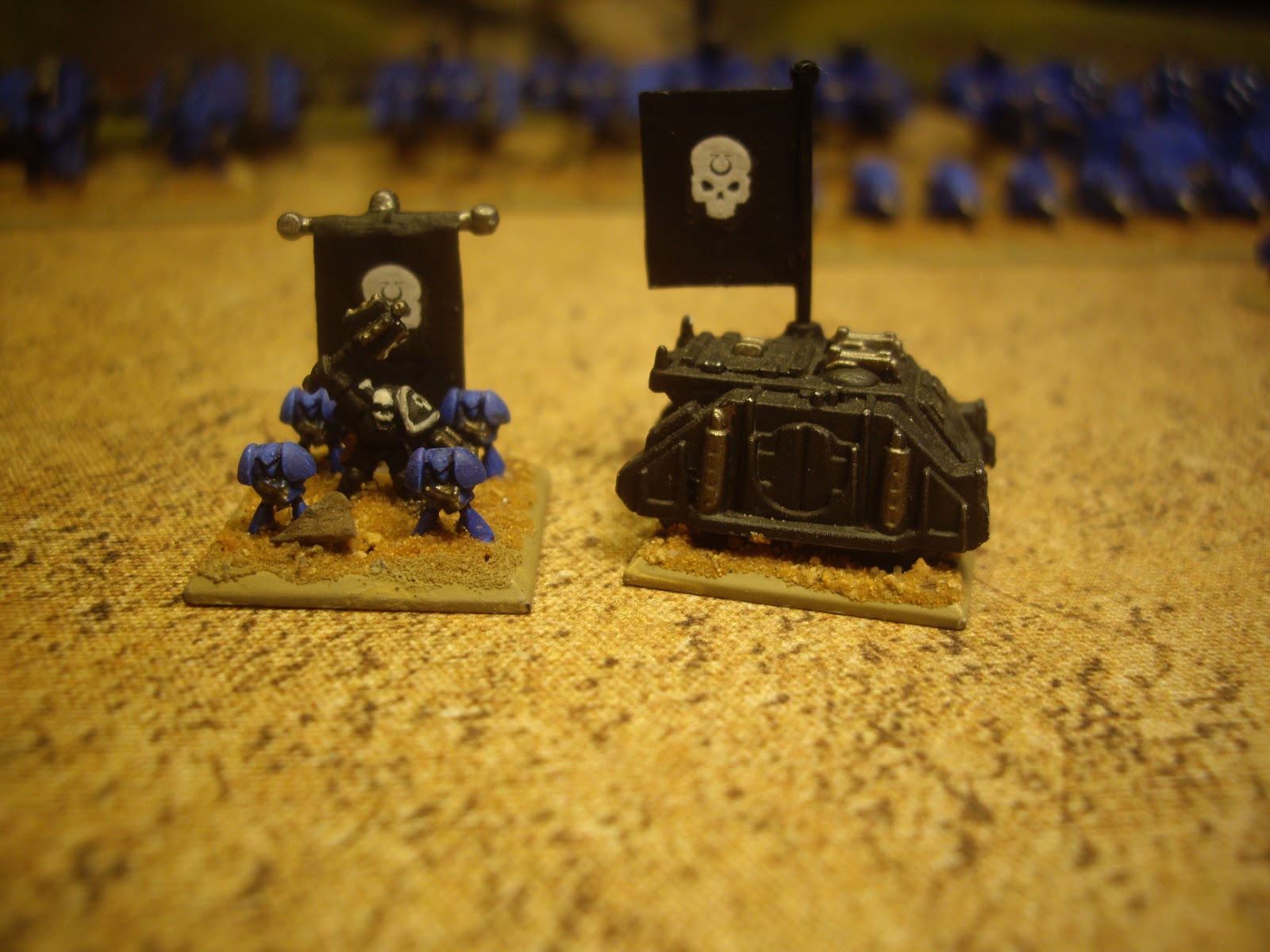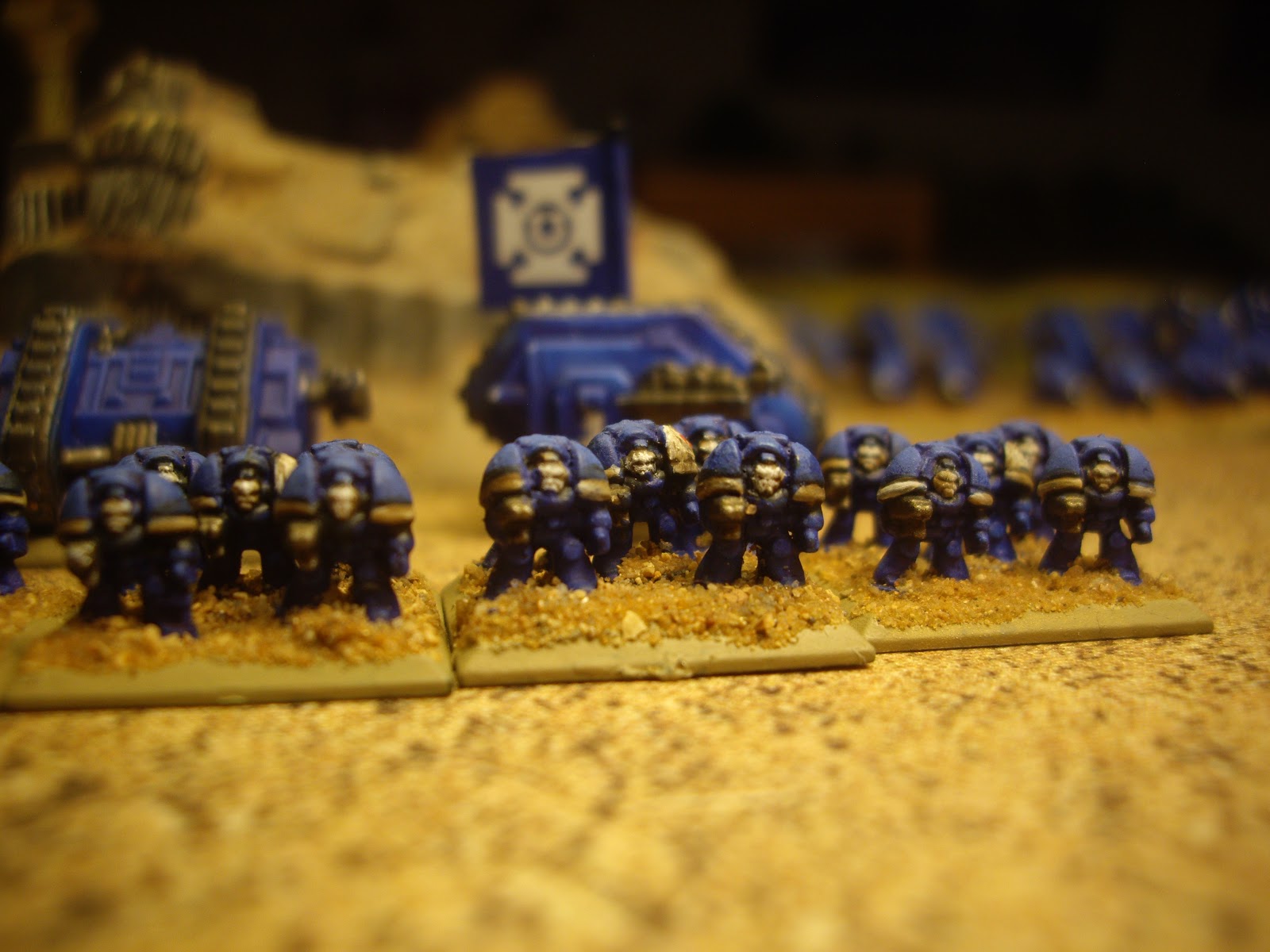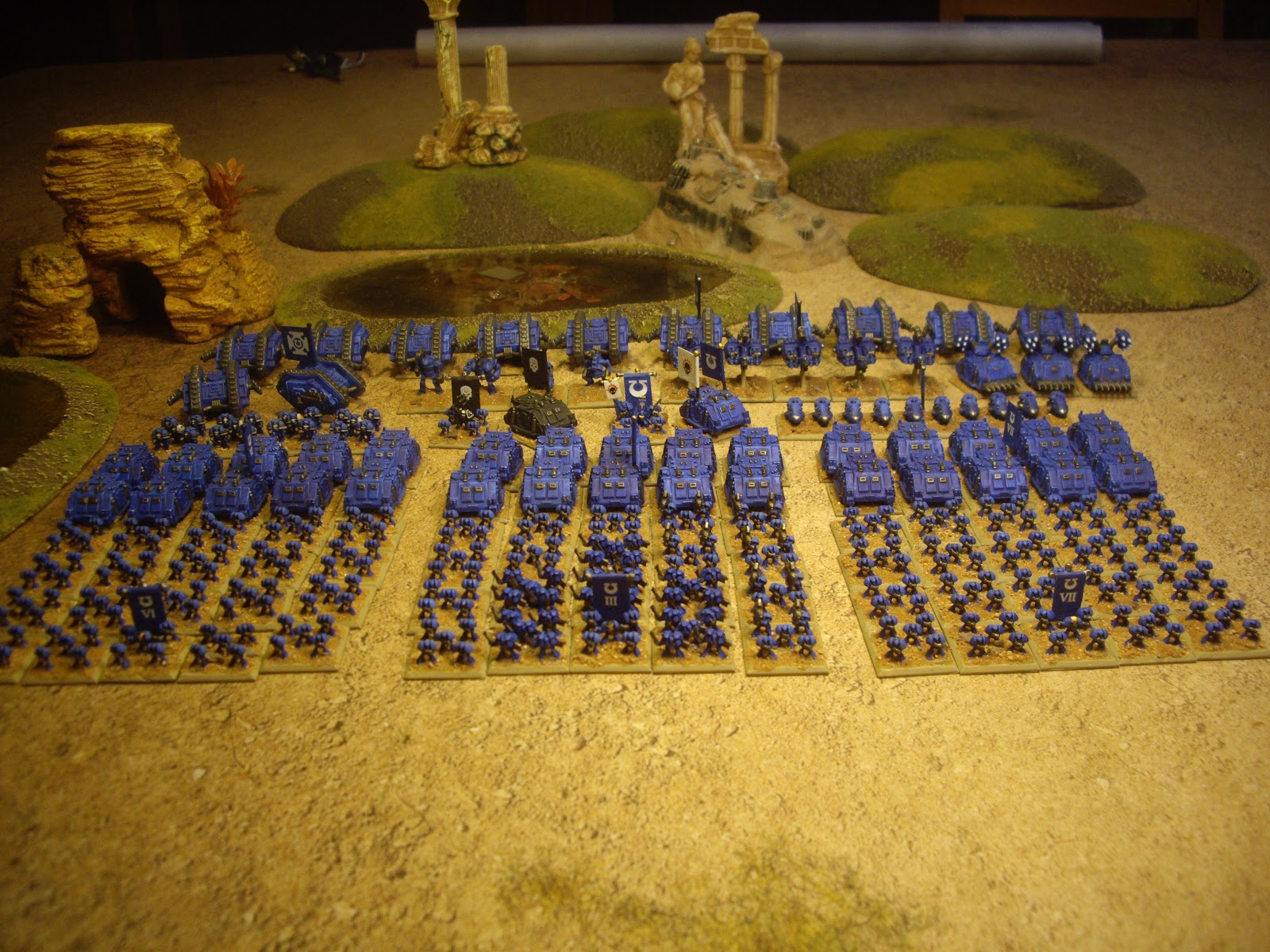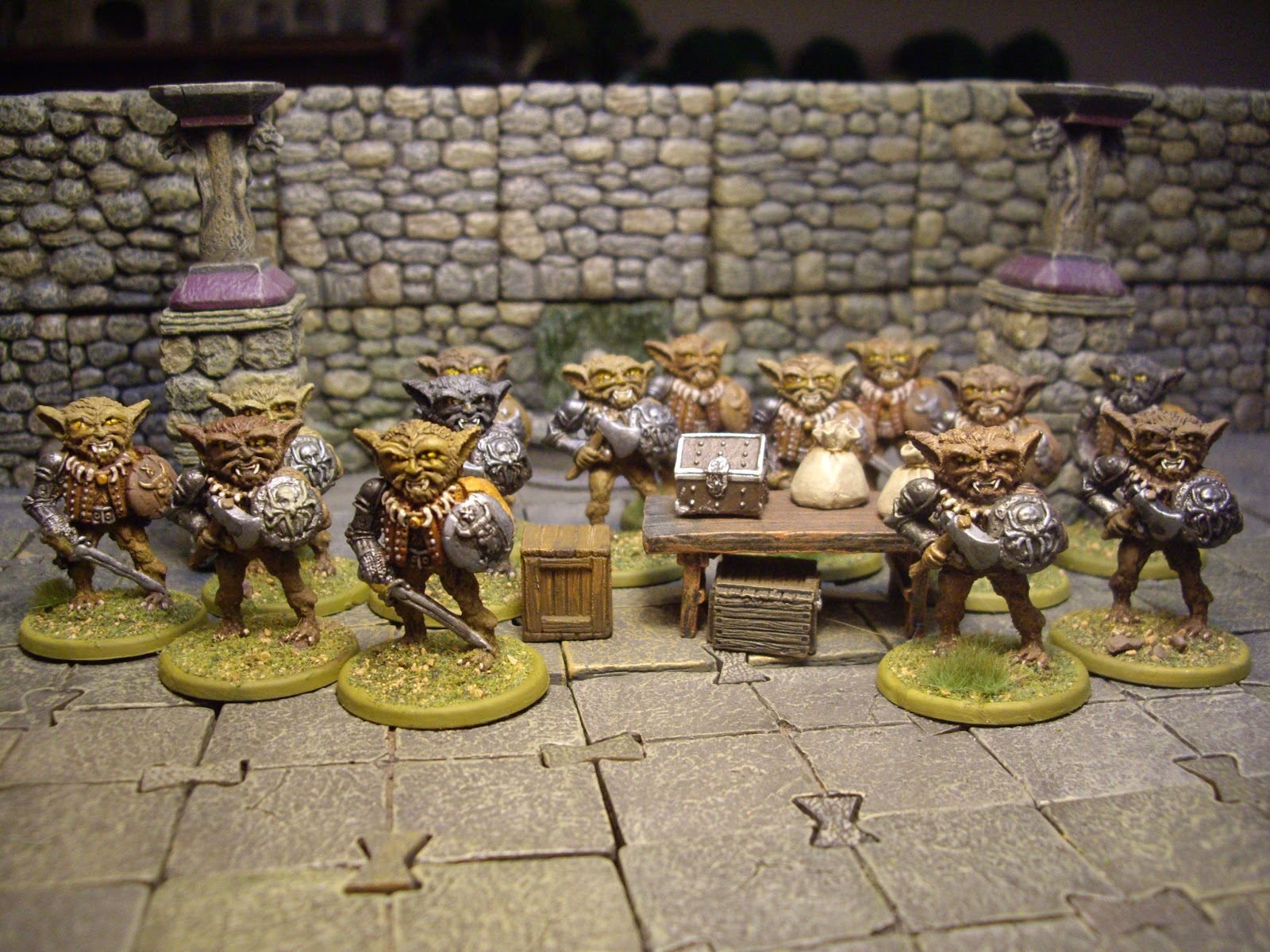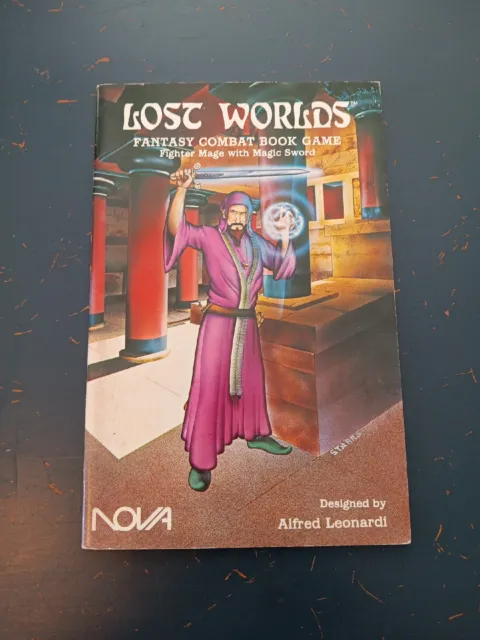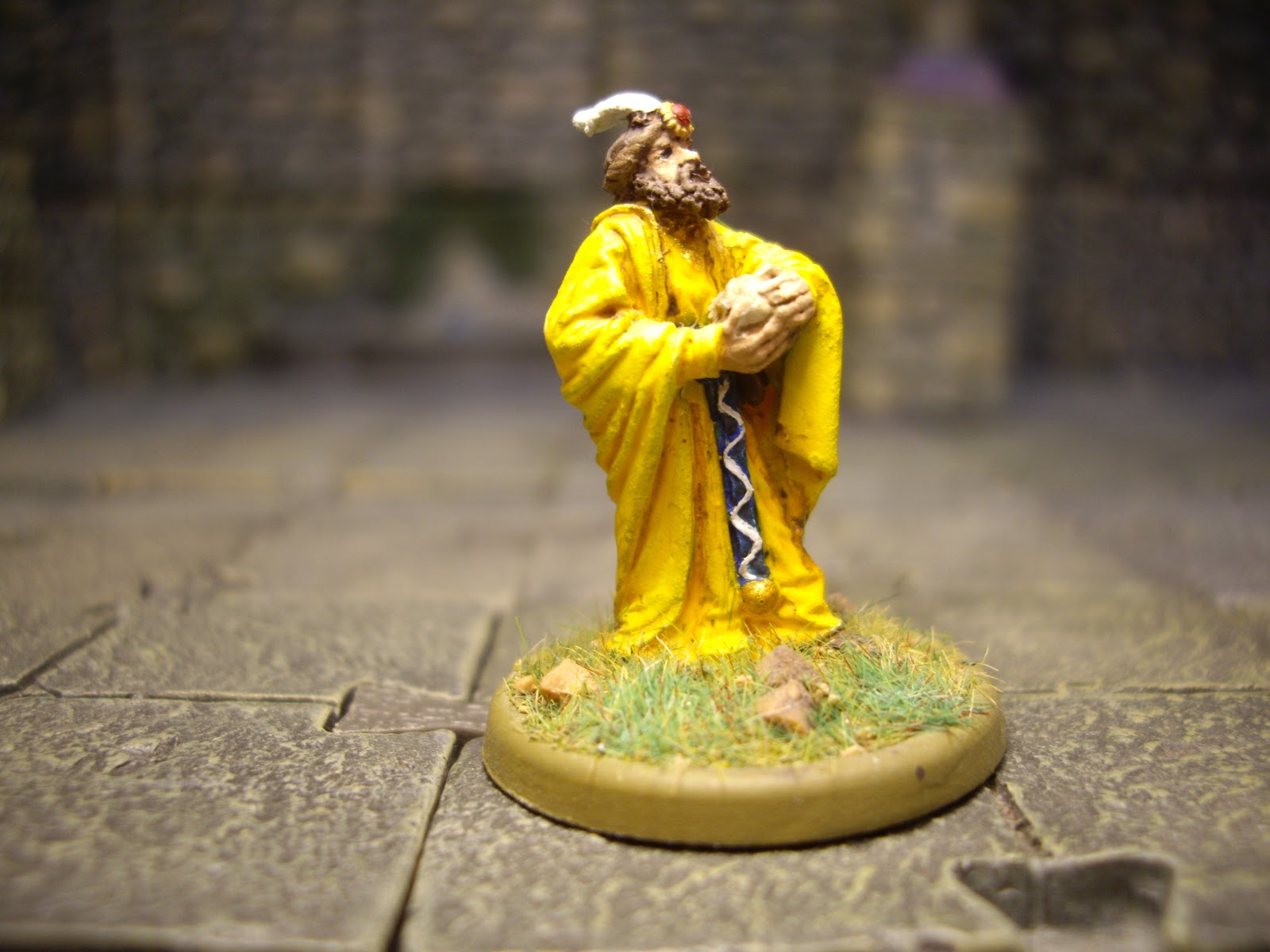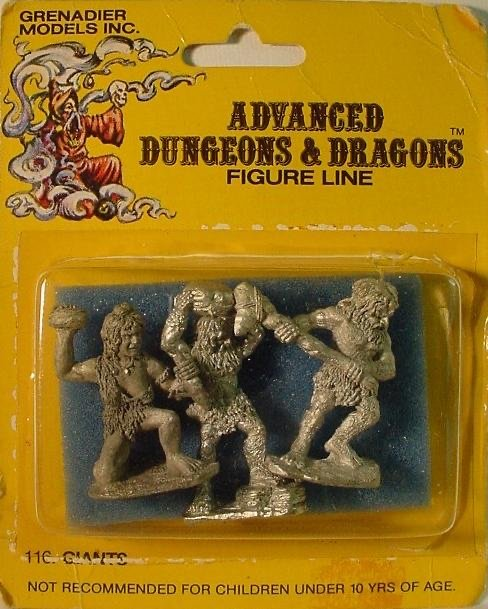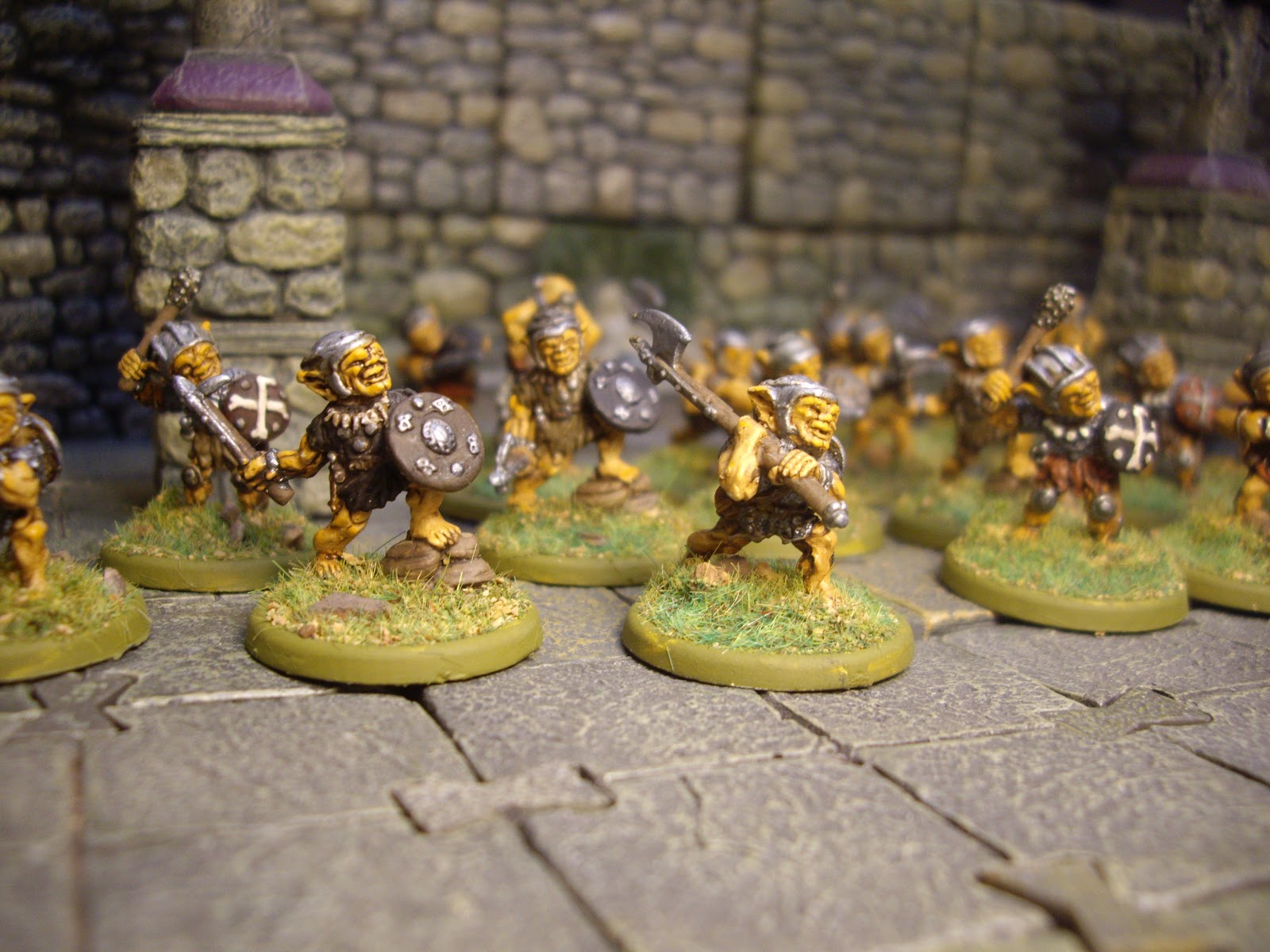
Here's my War Boss with his best Nob buddies and their ride. As might be gathered from his banners and standard, he is a member of the Evil Suns clan, and the theme extends throughout the army.

Waarrghh! C'mon, Boys! Let's get stuck in!
I think they look okay.
I wanted to start out with a well armored and mobile force that could compete with my Rhino-mounted and Land Raider-supported Ultra Marines so I took an Evil Sunz Clan and a Cult of Speed for my Company cards. I built up the Evil Suns Clan with extra Ork Boyz and Battlewagons to give them more staying power. For each Company card, I'm authorized one special or free card. I naturally wanted to make use of at least one free card, so I took the Freebooterz mob. They amount to just 4 infantry stands and a nob, so they don't amount to much, but I decided to make a bit of a spectacle of them, so I made special stands to represent them. I gave them a Skull Hamma Battle Fortess, festooned with pirate flags, for them to ride around in. I intend to use them as a special unit that can try to bypass enemy formations and seize objectives.
Again, keeping with the mobile armored theme, I rounded out the army with a collection of armored fighting vehicles that could keep up with the rest of the force, some of which can only be fielded as attachments to the Evil Suns mob.
Again, keeping with the mobile armored theme, I rounded out the army with a collection of armored fighting vehicles that could keep up with the rest of the force, some of which can only be fielded as attachments to the Evil Suns mob.
Whipping of massive clouds of dust and smoke, the Kult of Speed races into action.
The banners mark out the Nobz on their bikes.
I love the Road Warrior vibe these guys have.
Bowel Burnas. Exclusive to the Evil Sunz, they function much like a standard Burna unit, but are better armored.
Also exclusive to the Evil Sunz are these Spleen Rippas. They are not all that amazing in combat, but I am wild about the custom hot rod look they have. Really like these models.
These are Bone Crunchas. Useful both for shooting up enemy vehicles and plowing through infantry formations.
Bone Breakas are identical to Bone Crunchas but trade 1 heavy gun for the double mounted lighter guns of the Crunchas. Useful for taking out the Marines' Land Raiders.
Last are some of my favorites, My Freebooterz crew. I put a variety of models in these bases ad painted them up as Pratey as I could, with a Freebooterz banner and a matching one on their Skullhamma Battle fortress.
The horde is ready for battle. Future additions will be a lot more infantry heavy, which is likely to prove challenging for the Orks, as they to compete with the the entirely mechanized Marines. But that's a problem for another day. Time to get down to some fightin'!
The banners mark out the Nobz on their bikes.
I love the Road Warrior vibe these guys have.
Bowel Burnas. Exclusive to the Evil Sunz, they function much like a standard Burna unit, but are better armored.
Also exclusive to the Evil Sunz are these Spleen Rippas. They are not all that amazing in combat, but I am wild about the custom hot rod look they have. Really like these models.
These are Bone Crunchas. Useful both for shooting up enemy vehicles and plowing through infantry formations.
Bone Breakas are identical to Bone Crunchas but trade 1 heavy gun for the double mounted lighter guns of the Crunchas. Useful for taking out the Marines' Land Raiders.
Last are some of my favorites, My Freebooterz crew. I put a variety of models in these bases ad painted them up as Pratey as I could, with a Freebooterz banner and a matching one on their Skullhamma Battle fortress.
The horde is ready for battle. Future additions will be a lot more infantry heavy, which is likely to prove challenging for the Orks, as they to compete with the the entirely mechanized Marines. But that's a problem for another day. Time to get down to some fightin'!


